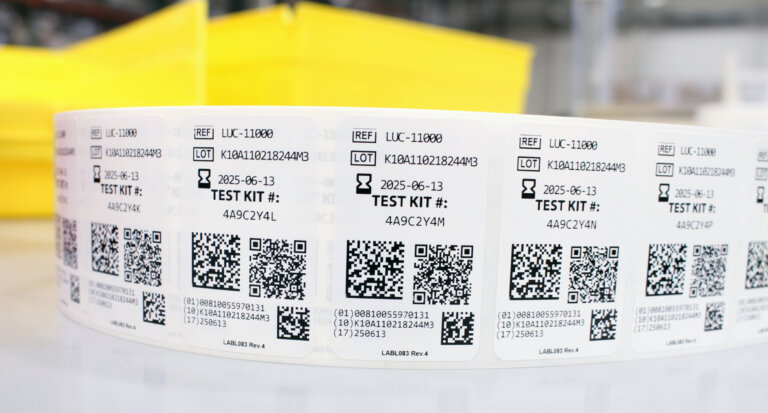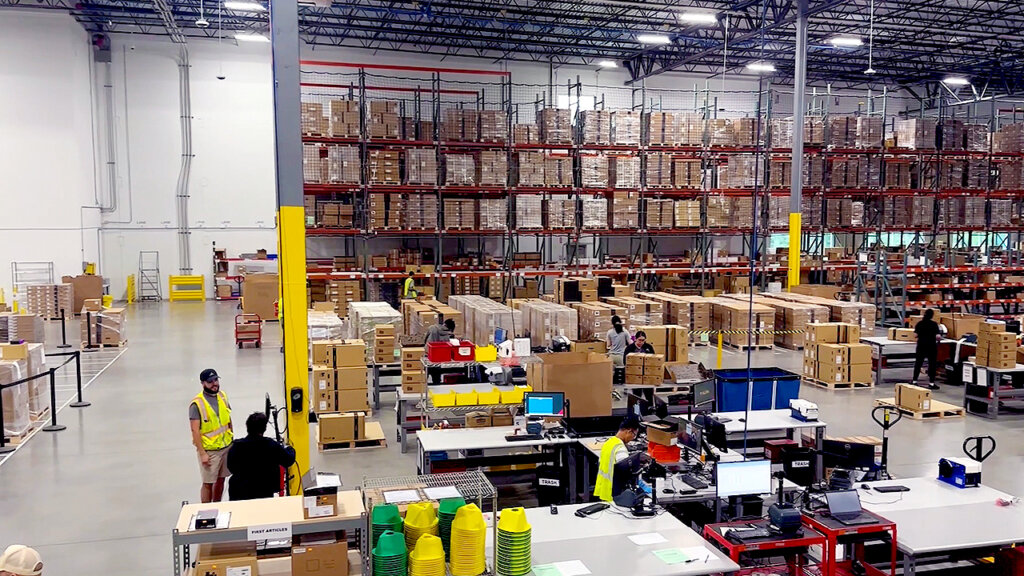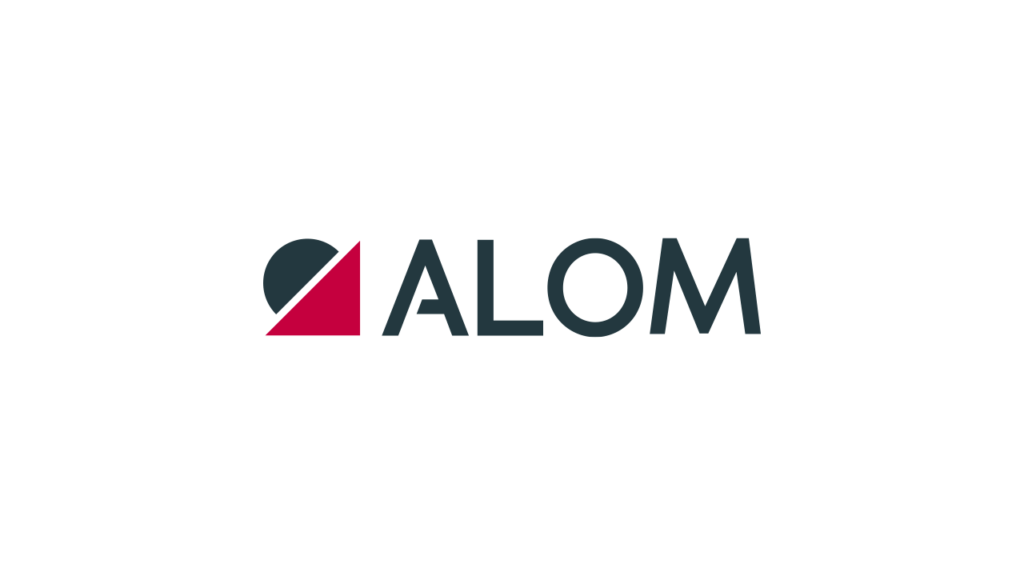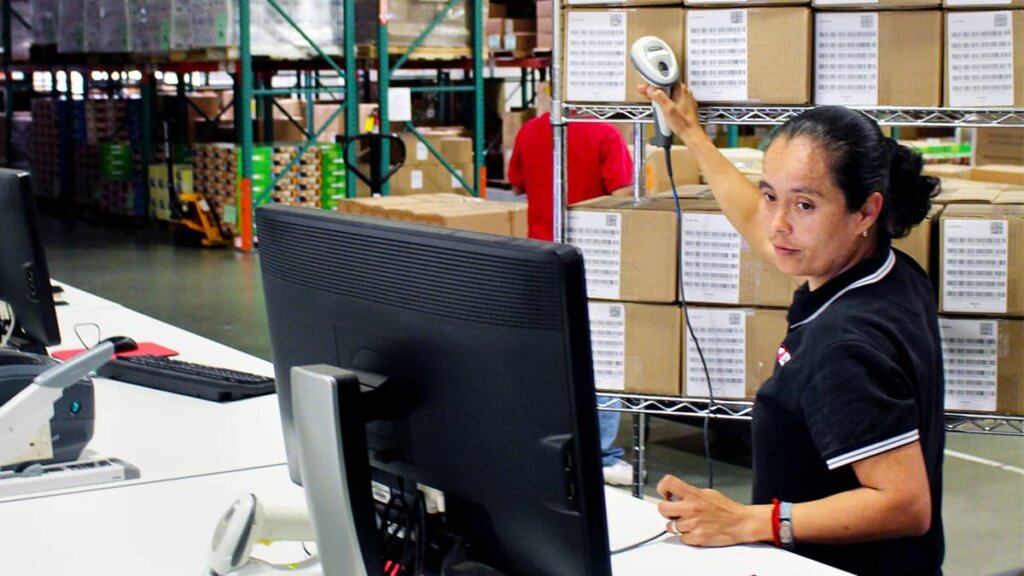Shireen Garrison leads new customer onboarding and account success initiatives. Globally, she and her team analyze stakeholder needs and take the lead role onboarding comprehensive supply chain programs for ALOM customers. She is a recent recipient of the Women in Supply Chain Award by Supply & Demand Chain Executive and Food Logistics.
Steve Brown has more than 20 years of expertise in strategic client services and managing complex customer integrations. He has successfully managed the on-time launch of several strategic programs for ALOM.
We caught up with Shireen and Steve and asked them to share insights and best practices that bring success when onboarding complex customer supply chain programs.
Q: What exactly is strategic account management?
Garrison: We ensure that we fully understand our customers’ requirements and communicate those needs throughout our organization so we can deliver effectively. This involves making sure the right processes and resources are in place to support the customer.
Brown: Strategic account management serves as a conduit between the sales organization and other functional departments. We focus on building the implementation team and bringing everyone together, including customer stakeholders, to ensure understanding of all project requirements and onboarding processes.
Q: Are you noticing any trends in what new customers are looking for when setting up their programs?
Garrison: Customers today demand real-time information. They want to know exactly what’s happening with their products, and data is key to delivering this. We also see a growing focus on sustainability – clients are not just looking for the cheapest options but also want to ensure they’re doing the right thing environmentally, from how and where materials are produced to the packaging materials used.
Brown: Flexibility is also a significant demand. Customers are looking for partners who can adapt quickly, scale up, provide good quality, and grow with them. Customization has become a standard expectation, driven by technological advancements and the evolving nature of business. Whether it’s B2B or B2C, customers expect quick, high-quality service, and that pressure extends to us as we design and implement solutions that meet these demands.
Q: From your perspective, what’s more challenging to manage: physical, digital, or financial supply chains?
Brown: Physical supply chains have long-established processes and are relatively straightforward as they are the bread and butter of supply chain management. Digital supply chains, which have grown robustly over the past decade, involve integrating technology like e-commerce. However, financial supply chains are the most complicated, particularly when dealing with multiple financial models, third-party vendors, and the complexities that arise in regulated industries like medical and insurance.
Garrison: Financial supply chains are challenging because they often involve reconciling diverse elements, such as client payments, third-party vendor payments, and information necessary for insurance coverage. The complexity increases when different financial models are in play, requiring careful coordination and management.
Q: How do you ensure that physical, digital, and financial supply chains work together seamlessly?
Brown: A good example is in e-commerce. You might have a mix of digital and physical components, like a customer placing an order online, which is then fulfilled by us. Financial aspects, like subscription models, add another layer of complexity. The key is to integrate these components into a cohesive system that works smoothly from order placement to fulfillment and payment. For instance, in one of our programs, we designed a website that allows customers to input their vehicle information, retrieve necessary data, and then decide whether to download the upgrade or place an order for a physical product. This process combines physical, digital, and financial elements seamlessly.
Garrison: Ultimately, the goal is to ensure that each component of the supply chain supports the others, whether it’s the physical aspect of shipping a product, the digital process of managing orders and data, or the financial transactions that underpin the entire operation.
Q: When onboarding a new customer, how often does the initial program plan need to be modified?
Garrison: It happens quite frequently. My favorite TV show is Big Brother, where they say, “Expect the unexpected.” That’s how my career feels. Clients often face unexpected changes, and we need to adapt quickly to meet their evolving needs. For example, during the onboarding phase, we may find that the customer’s needs change from what was initially outlined in the contract, leading to scope creep that we must manage carefully.
Brown: Scope creep is a common issue during onboarding. The program often evolves differently from the initial plan, so we have to monitor these changes closely and ensure that we’re signing up for things we can deliver. It’s a collaborative process where we adjust the plan as needed. One key aspect of our role is to protect both the client’s interests and our own, making corrections when necessary to keep the project on track.
Q: How do you handle situations where the customer is holding up a project?
Garrison: Building a strong relationship with the client from the start is crucial. We spend a lot of time understanding their requirements and timelines. If a delay happens, it’s usually due to resource constraints on the client’s side, such as a lack of IT resources. We address this by over-communicating and making sure the client understands the dependencies and potential impacts of delays.
Brown: Over-communication is key. We frequently review the project plan with the customer to keep everyone on the same page. Even small issues, like delays in producing a label, can hold up the entire launch, so we stay vigilant and make sure everyone understands what’s critical. It’s about ensuring that the plan is clear, the timeline is visible, and all parties are informed.
Q: Is communication the key to successful collaboration between suppliers and customers?
Brown: Absolutely. As long as everyone is involved and informed, challenges can be managed. Keeping the process and timeline visible to both sides allows us to address any issues that arise.
Garrison: It’s also important to build in some contingency plans because unexpected problems can always pop up. Being prepared with the right data and information allows us to make quick, informed decisions.
Q: What are your thoughts on the onboarding process? Is it exciting, challenging, or both?
Garrison: Onboarding can be very exciting but also challenging. The timeline can vary significantly, and during COVID, we had to onboard some clients in just two to three weeks, which was very challenging but also rewarding when everything came together. Normally, onboarding takes at least a month or two, but in emergencies like the COVID situation, we had to compress that timeline significantly.
Brown: Some onboardings can take up to a year, especially when defining the scope and working through the entire process. There’s a great sense of pride and accomplishment when a program is finally launched, especially if it was done ahead of schedule. The excitement comes from overcoming challenges and seeing the first product or service successfully delivered.
Q: What can customers do to facilitate a faster onboarding process?
Garrison: Customers need to have established processes and be clear about their product requirements. This helps us move quickly. We can also assist them in developing these processes if needed.
Brown: Having a well-defined scope and streamlining the legal process are critical for faster onboarding. Delays often happen in the legal phase, so working closely with the customer to expedite this can significantly reduce the time needed to get started. The sooner we can get the Master Agreement and initial contracts signed, the quicker we can move into the actual onboarding process.
Q: Are contracts more complex today than they were in the past?
Brown: Definitely. Globalization has added layers of complexity, with different laws and regulations that need to be considered, especially when expanding internationally. Contracts today often need to accommodate these factors right from the start. For example, dealing with local laws related to consumer goods, cosmetics, or medical products means that contracts have to be much more detailed to cover all the potential issues.
Garrison: The rise of data security concerns has also complicated contracts. With laws like GDPR in Europe and varying privacy regulations across different states in the U.S., ensuring compliance is a big part of today’s contracts. These legalities are crucial to ensure that both our organization and the customer are protected and that we are handling data securely and responsibly.
Q: Is the onboarding timeline usually a collaborative process with the client?
Brown: Yes, at every stage, the customer is aware of the timeline. Customers always want to be onboarded as quickly as possible, and our open communication process helps manage their expectations. We keep them informed through updated project plans and regular communication, which helps alleviate any pressure or concerns about the timeline.
Garrison: It’s a collaborative process from the start. We work closely with the client to set realistic expectations and ensure that everyone is aligned on the timeline and deliverables. If any issues arise, we address them together, making sure there are no surprises.
Q: Can you share an example of a particularly challenging onboarding?
Garrison: Onboarding customers during the pandemic was challenging because we couldn’t meet in person. We had clients sign up without ever visiting our site or meeting us face-to-face, which was a unique experience. However, people are becoming more comfortable with remote interactions. Despite these challenges, we successfully onboarded several clients, which required us to adapt our processes and build trust through virtual means.
Brown: One specific example was with a major automotive OEM. We initially planned a simple solution, but through our scoping process, we realized that we could offer a more comprehensive service. We ended up designing an entire website and e-commerce solution that allows customers to manage their vehicle information, choose their upgrade options, and either download the necessary files or have a physical product shipped to them. This was a complex project, but by working closely with the client and adapting our approach, it became one of their most successful programs.
Q: Is it easier to onboard an existing program that’s shifting from another provider, or to build a program from scratch?
Garrison: It can be easier to take on a client with an existing program because they know what they want and need. They have experience with what worked or didn’t work with their previous supplier, which makes it easier to tailor our services to meet their expectations. However, building a program from scratch can also be exciting, as it allows us to design a solution that’s highly specific to the customer’s needs, without the constraints of existing processes.
Brown: Whether it’s shifting an existing program or building something new, the key is understanding the client’s goals and designing a solution that meets those needs. In both cases, we leverage our experience and technology to deliver the best possible outcome.
This Q&A was excerpted from a transcript of an episode of Smart Supply Chain. You can listen to the podcast episode here.
- Posted in: Podcast, Supply Chain












